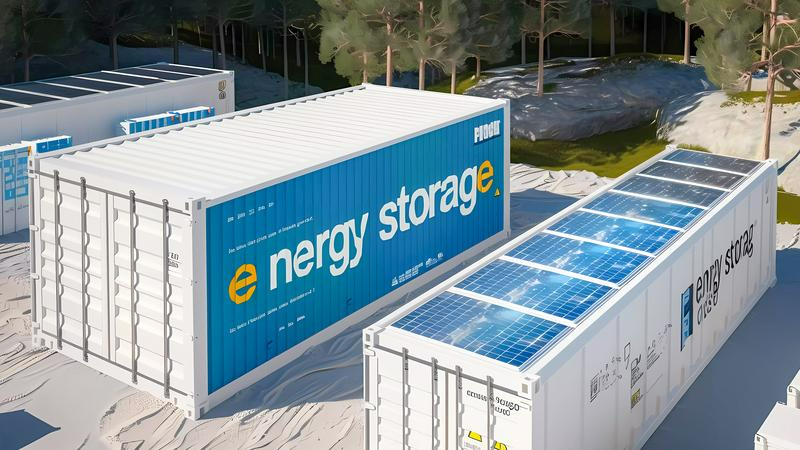1. The concept and development background of distributed energy
Distributed energy, unlike traditional centralized energy, is an integrated system located near the user load center. It includes power generation, cogeneration, energy storage, and energy management systems. Initially, distributed energy systems were based on cogeneration but later expanded to include various energy types like household solar power systems and wall-mounted gas heating systems. As my country advances energy supply-side structural reforms, distributed energy sources such as solar, natural gas, wind, biomass, and geothermal have become key tools for addressing climate change and ensuring energy security.
2. The rapid growth of distributed photovoltaics
In recent years, distributed photovoltaics have experienced explosive growth in my country. As per the “Annual Development Report of China’s Clean Energy Industry,” in 2017, China’s PV installed capacity surged by 53.06 GW, maintaining its global top spot for five years. Distributed PV notably grew by 19.44 GW, a remarkable 3.7-fold increase year-on-year. On the other hand, decentralized wind power has seen slower progress, yet with policy and market boosts, its future outlook remains promising.
3. Advantages of distributed energy: efficient utilization and new energy consumption
① Advantages of efficient energy utilization
Distributed energy systems have higher energy utilization rates than traditional centralized power supply systems. Although traditional large-scale thermal power units have high power generation efficiency, due to the limitation of heating radius, it is difficult to fully utilize the waste heat of power generation, resulting in low overall energy utilization. Distributed energy systems can maximize energy utilization efficiency through cascade utilization, reaching more than 80% or even higher.
② Solving the problem of new energy consumption
Distributed energy is an important way to solve the problem of new energy utilization. Despite leading globally in wind and solar capacity, my country faces issues of “curtailment.” Distributed energy, situated near demand centers, minimizes waste and boosts efficiency. It aids peak power demands, enhancing reliability, especially in remote regions, holding significant economic value.
4. Distributed energy development looks forward to policy support
Distributed energy expansion encounters diverse hurdles: vague policies, implementation complexities, underutilized capacity, access barriers, fund exemptions, and gas price cuts. Projects need 60%-70% load utilization for profitability, posing economic challenges.
High construction costs stem from pricey components like small gas turbines, PV modules, and storage systems. Economic viability lags behind traditional energy sources. National policies, financial aid, tech advancements, and incentives are vital for progress. Technical support is critical to address voltage fluctuations, ensuring grid stability and quality power supply. Balancing distribution networks remains a key technical hurdle.
5. Energy storage and microgrids: new driving force for the development of distributed energy
① Application of energy storage technology
The advancement of energy storage technology has injected new impetus into the development of distributed energy. By integrating energy storage equipment into distributed energy systems, demand-side management can be effectively achieved, load peak-to-valley differences can be reduced, and power supply costs can be reduced. With the development of energy storage technology and the reduction of costs, the combination of energy storage and distributed energy will become more economical and feasible.
②Flexible application of microgrids
As a small grid system that can control and manage itself, microgrids can be connected to the external grid or run in isolation, which promotes the flexible and efficient application of distributed power sources. The promotion of microgrids not only improves the safety and reliability of the power system, but also promotes the popularization of distributed power generation of renewable energy, providing strong support for the development of distributed energy.
6. Future prospects of distributed energy: coordinated promotion of policies, technologies and business models
① Dual drive of policies and markets
The development of distributed energy not only depends on technological progress, but also requires the coordinated promotion of policies and markets. At present, there are still many areas for improvement in policy support and market mechanisms for distributed energy. The support of the state in terms of fiscal subsidies, tax incentives, etc. will directly affect the enthusiasm of investors. At the same time, the regional development policies of local governments also need to be coordinated with national policies to form a joint force to promote the development of distributed energy.
②Technological innovation and exploration of business models
Energy storage tech, smart microgrids, and optimized system design are pivotal in advancing distributed energy. Lowered storage costs and enhanced performance boost system economy and stability. Innovative models like “distributed energy + energy storage” integration herald a promising future direction.
7. Summary: The great prospects of distributed energy
In the future, with the development of distributed photovoltaics, decentralized wind power and other renewable energy sources, we will use the widespread application of energy storage technology and microgrids to improve energy efficiency, optimize energy structure and ensure energy security. To achieve these goals, we need national policy guidance and the joint efforts of various industries to continuously promote technological innovation and improve business models, and ultimately realize the development of distributed energy.
learn more:Challenges in integrating distributed Energy storage systems into future smart grid

